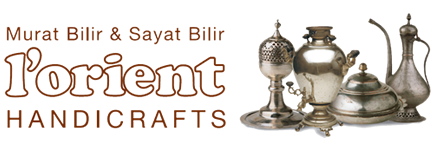
As various scholars have claimed metalworking goes back to the 7th or 8th Millennium B.C. , particularly in Anatolia and in the Near and Middle-East.
From the joint survey of Halet Çambel and Robert Braidwood, published in 1983, we learn that in the last quarter of the 8th Millennium B.C. In Anatolia -Turkey of today- copper was worked for the first time.
According to some Egyptian specimens dating back to 5000 years B.C., copper was used in large quantities,even though in very primitive ways.
There have been other archeological surveys on various ancient sites. Among these, the Urbaid Civilization in Mesopotamia offers us the use of ornamental and artistic objects, as well as tools and weapons, around the year 4500-4000 B.C.
Then, there are two Siberian Cultures worth noticing. “Afanesievo” and “Andronove” in the years 2500-2000 B.C. with many examples of figurative decorations and utensils in both copper and bronze.
And the last one to remember for us is the old central Asian culture “Karasuk” which offers us delicate samples of engraved bronze daggers, arrows, pots and bowls.
Even in Homer's great epics the Iliad and Odyssey one can follow the clattering of bronze weapons and armour.
As you may all know pure copper is too soft for use in weapons but with the addition of tin it results in bronze. This is a hard and tough metal which allows the forming of a sharp edge. I think probably, it was for this reason that the Phonecians sailed far and wide in search of the necessary tin and found it in England. Also, many years after, the Romans did the same.
Over the years, almost every ethnic group developed characteristic vessel shapes, surface motifs and metalworking techniques specific to the area.
Lying at the crossroad where various civilizations met, Anatolia mixed the characteristics of many cultures coming to it from various directions at different times. We can justifiably describe Anatolia as a melting pot.
Throughout the ages metalware has been in great demand , especially for utensils. Also, as valuable gift items exchanged by rulers and the noble classes. Supply and demand helped to develop local traditions. On the other hand, art-loving rulers and merchants always patronized artisans and this, of course, helped to create masterpieces. Now, these masterpieces are decorating the shelves of museums and private collections.